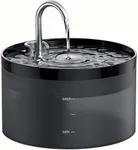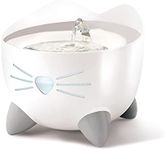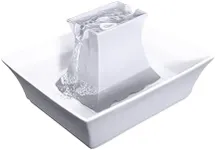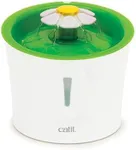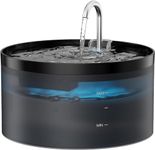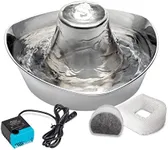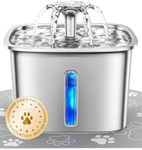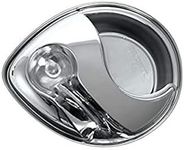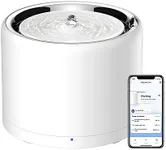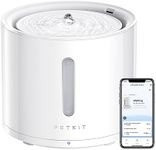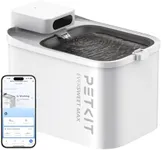Buying Guide for the Best Cat Fountains
Choosing the right cat fountain can make a big difference in your cat’s hydration and overall health. Cats are often more attracted to moving water, so a fountain can encourage them to drink more. When shopping for a cat fountain, it’s important to consider your cat’s preferences, the number of pets you have, and how much time you want to spend on maintenance. Understanding the key features will help you find a fountain that fits both your lifestyle and your cat’s needs.CapacityCapacity refers to how much water the fountain can hold at one time. This is important because a larger capacity means you won’t have to refill the fountain as often, which is especially useful if you have multiple cats or are away from home frequently. Small fountains (under 1 liter) are suitable for single cats or if you don’t mind refilling daily. Medium fountains (1-2 liters) work well for one or two cats, while large fountains (over 2 liters) are best for multiple pets or busy owners. Think about how many cats you have and how often you want to refill the fountain to choose the right capacity.
MaterialCat fountains are usually made from plastic, stainless steel, or ceramic. The material affects durability, ease of cleaning, and sometimes your cat’s health. Plastic is lightweight and affordable but can scratch easily and may harbor bacteria if not cleaned well. Stainless steel is durable, resists bacteria, and is easy to clean, making it a good choice for most cats. Ceramic is also easy to clean and looks attractive, but it can be heavier and more fragile. If your cat has allergies or you want something that’s easy to keep clean, stainless steel or ceramic are often better choices.
Filtration SystemThe filtration system keeps the water clean and fresh by removing hair, debris, and sometimes odors or chemicals. Most fountains use replaceable filters, which can be mechanical (catching particles), chemical (removing odors and tastes), or both. Some fountains have multi-stage filters for extra cleanliness. If your cat is sensitive to water taste or you want to minimize cleaning, look for a fountain with a good filtration system. Consider how often filters need to be replaced and how easy they are to find.
Noise LevelNoise level refers to how much sound the fountain makes when running. Some cats are sensitive to noise and may avoid a fountain that’s too loud, while others aren’t bothered. Fountains with quiet pumps are better for nervous cats or if you plan to place the fountain in a quiet area like a bedroom. If you don’t mind a gentle water sound, a slightly louder fountain can be fine. Think about your cat’s personality and where you’ll put the fountain when considering noise.
Ease of CleaningEase of cleaning is about how simple it is to take apart and wash the fountain. Fountains with fewer parts and smooth surfaces are easier to clean, which is important for preventing bacteria buildup and keeping your cat healthy. Some materials, like stainless steel and ceramic, are easier to keep clean than plastic. If you want to spend less time on maintenance, look for a fountain that’s dishwasher-safe or has simple construction.
Water Flow OptionsSome cat fountains offer different water flow settings, such as a gentle stream, bubbling, or waterfall. This can be important because some cats prefer certain types of water movement. Adjustable flow allows you to find what your cat likes best and can also help reduce splashing. If your cat is picky or you’re not sure what they prefer, a fountain with multiple flow options gives you flexibility.

